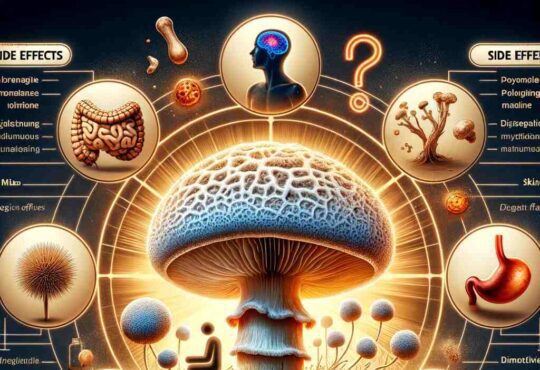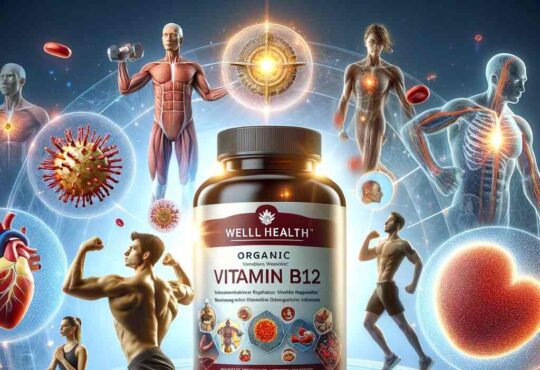I. Introduction
Spinal stenosis is a condition that affects many individuals, causing pain and discomfort in the back and spine. Understanding the basics of this condition is crucial for those looking to alleviate their symptoms and improve their quality of life.
Understanding the Basics: What is Spinal Stenosis?
Spinal stenosis occurs when the spaces within the spine narrow, resulting in added pressure on the spinal cord and nerves. This compression can lead to a variety of symptoms, including pain, numbness, and weakness. It is essential to grasp the fundamentals of spinal stenosis in order to navigate through potential treatment options.
The Prevalence of Spinal Stenosis
Despite being a condition that primarily affects older individuals, spinal stenosis is more common than many people realize. Studies have shown that it affects approximately 8-11% of the population worldwide. This highlights the importance of addressing and managing spinal stenosis symptoms effectively.
II. Causes and Risk Factors
Age: The Primary Culprit
Age is the primary contributing factor to the development of spinal stenosis. As we grow older, the natural wear and tear on the spine can lead to degenerative changes, causing the spaces within the spinal canal to narrow.
Genetic Predisposition: Is It In Your Genes?
While age plays a significant role, genetics can also influence an individual’s susceptibility to spinal stenosis. Some people may inherit certain traits that make them more prone to developing this condition.
Spinal Injuries and Trauma: A Contributing Factor
Injuries and trauma to the spine can contribute to the development of spinal stenosis. Accidents, falls, and other incidents that directly impact the back can lead to structural changes within the spine, resulting in stenosis over time.
Lifestyle and Bad Habits: Are You at Risk?
Certain lifestyle choices and habits can increase the risk of developing spinal stenosis. Factors such as poor posture, lack of exercise, and obesity can all contribute to spinal degeneration and the narrowing of the spinal canal.
III. Identifying Symptoms
Recognizing the Early Signs
Identifying the early signs is crucial for prompt intervention and treatment. Common symptoms include back pain, numbness or tingling in the legs or arms, weakness, and difficulty walking or maintaining balance. These early indicators should not go unnoticed.
Types of Spinal Stenosis and Their Symptoms
There are two primary types :
Cervical Stenosis:
which affects the neck area, and lumbar stenosis, which occurs in the lower back region. Symptoms may differ depending on the location of the stenosis, with cervical spinal stenosis often leading to neck pain, arm pain, and coordination difficulties
Lumbar Stenosis:
It typically causes back pain, leg pain, and difficulty walking. Understanding these distinctions can aid in accurate diagnosis and effective treatment.
Before discussing chiropractic care, it’s essential to understand the different types of stenosis and the symptoms they can cause. Spinal stenosis refers to the narrowing of the spaces within the spine, putting pressure on the spinal cord or nerves. This condition primarily affects the neck and lower back areas, resulting in various discomforts.


Cervical Stenosis:
Cervical stenosis occurs when the spinal canal in the neck narrows, exerting pressure on the spinal cord. The symptoms of this condition can range from mild to severe, including:
- Neck pain and stiffness
- Radiating pain that travels down the arm
- Numbness or tingling sensations in the arms, hands, or fingers
- Weakness in the upper extremities
- Impaired balance and coordination
Lumbar Stenosis:
In the case of lumbar stenosis, the spinal canal in the lower back becomes narrower, leading to compression of the spinal nerves. Individuals with this condition may experience the following symptoms:
- Lower back pain that worsens with activity
- Pain, tingling, or numbness in the buttocks or legs
- Weakness or cramping in the legs, particularly during walking or standing
- Difficulty controlling bladder or bowel functions in severe cases


Understanding Chiropractic Care for Stenosis
Chiropractic care is a non-invasive, drug-free treatment approach that focuses on the relationship between the spine and nervous system. Chiropractors, who are highly trained healthcare professionals, utilize various techniques to alleviate pain, improve mobility, and enhance overall spinal health. While chiropractic care is often associated with manual adjustments, it involves a broader range of treatments tailored to individual needs.
Spinal Manipulation:
One of the primary techniques employed by chiropractors is spinal manipulation or adjustment. This hands-on approach involves applying controlled force to specific areas of the spine, aiming to restore proper alignment, mobility, and function. By relieving pressure on the affected nerves, spinal manipulation can potentially reduce spinal stenosis symptoms and promote healing.
Additional Therapies:
In conjunction with spinal manipulation, chiropractors may employ additional therapies to complement the treatment plan for stenosis. These may include:
Physical Therapy: Chiropractors may incorporate physical therapy exercises and stretches to improve muscle strength, flexibility, and posture.
Massage Therapy: Massage techniques can help relax tense muscles, promote blood circulation, and alleviate pain associated with spinal stenosis.
Electrical Stimulation: Chiropractors may use electrical stimulation to target specific areas and facilitate healing, reduce inflammation, and relieve pain.
The Controversy Surrounding Chiropractic Care for Stenosis
Despite the positive experiences reported by many patients, the effectiveness of chiropractic care for stenosis remains a subject of controversy within the medical community. Critics argue that the scientific evidence supporting its benefits is limited or inconclusive, emphasizing the importance of considering other evidence-based treatment options.
It is crucial for individuals considering chiropractic care to approach it with discernment and seek consultation from healthcare professionals with a comprehensive understanding of spinal stenosis. A customized treatment plan that combines chiropractic care with other conventional methods, such as physical therapy or medication, may provide the most optimal outcome for managing spinal stenosis symptoms.
Summary
While chiropractic care for spinal stenosis can be effective in alleviating symptoms for some individuals, it is essential to consider the varying opinions and controversy surrounding this treatment approach. By understanding the different types of spinal stenosis and their symptoms, as well as gaining insight into chiropractic techniques and potential complementary therapies, individuals can make informed decisions regarding their treatment options. Remember, always consult with a healthcare professional before embarking on any new treatment regimen to ensure it is suitable for your specific condition.
When to Seek Medical Attention
If you experience persistent or worsening symptoms, it is crucial to consult a healthcare professional. Timely medical intervention can help alleviate discomfort, slow disease progression, and prevent potential complications. Do not ignore the signs; seek medical attention and take the necessary steps towards reclaiming your spinal health.
IV. Seeking Diagnosis
Obtaining a precise diagnosis is the key to appropriate treatment and effective management of spinal stenosis.
Medical History and Physical Examination
During the diagnostic process, your healthcare provider will conduct a thorough medical history review and physical examination. By gathering information on your symptoms, medical background, and family history, they can better assess the potential causes and severity of your condition. A comprehensive physical examination can also provide valuable insights into the presence and impact of spinal stenosis.
Radiological Assessments: X-Rays, CT Scans, and MRIs
Radiological assessments, including X-rays, CT scans, and MRIs, play a crucial role in diagnosing spinal stenosis. These imaging techniques allow healthcare professionals to visualize the bones, discs, and nerves in the spine, facilitating the identification of any structural abnormalities and narrowing in the spinal canal. Accurate diagnosis through radiological assessments ensures the implementation of appropriate treatment strategies.
Other Diagnostic Techniques: Electromyogram (EMG) and Nerve Conduction Study (NCS)
In some cases, additional diagnostic techniques such as electromyogram (EMG) and nerve conduction studies (NCS) may be employed to evaluate the function and health of the nerves in the affected area. These tests can provide valuable insights into the severity and extent of nerve involvement, aiding in the overall diagnostic process and treatment planning.
V. Treating Spinal Stenosis: Non-Surgical Options
Non-surgical treatment options are typically the first line of defense against spinal stenosis symptoms. These approaches aim to alleviate pain, improve mobility, and enhance overall quality of life.
Pain Management: Medications and Injections
Pain management plays a critical role in providing relief for individuals with spinal stenosis. Nonsteroidal anti-inflammatory drugs (NSAIDs), muscle relaxants, and analgesics may be prescribed to alleviate pain and reduce inflammation. In some cases, corticosteroid injections can be administered to directly target and relieve localized pain in the affected areas.
The Power of Physical Therapy
Physical therapy is a cornerstone of non-surgical treatment for spinal stenosis. A skilled physical therapist can design a tailored exercise program that focuses on flexibility, strengthening, and postural correction. Through specific exercises and techniques, physical therapy aims to improve spinal mobility, reduce pain, and enhance overall functionality.
The Role of Exercise in Alleviating Symptoms
Engaging in regular exercise is vital for individuals with spinal stenosis. Low-impact activities such as walking, swimming, and cycling can help maintain spinal flexibility, strengthen supporting muscles, and improve overall cardiovascular health. By incorporating appropriate exercise into your routine, you can positively impact your spinal health and alleviate symptoms.
Assistive Devices and Orthotics: An Aid for Stability
Assistive devices and orthotics, such as braces or shoe inserts, may be recommended by healthcare professionals to provide stability and support to individuals with spinal stenosis. These devices help reduce strain on the spine, enhance posture, and alleviate pain. By utilizing these aids, individuals can experience a significant improvement in their spinal stenosis symptoms.
VI. Surgical Interventions for Spinal Stenosis
In cases where non-surgical treatments fail to provide sufficient relief, surgical interventions may be considered. These surgical procedures aim to decompress the spinal canal and create more space for the nerves, offering long-term symptom relief.
Decompressive Laminectomy: Is It Right for You?
Decompressive laminectomy, the most common surgical procedure for spinal stenosis, involves removing a portion of the lamina, the bony arch of the affected vertebrae. By creating additional space in the spinal canal, this procedure aims to relieve pressure on the spinal cord or nerves, alleviating pain and improving functionality.
Spinal Fusion: When Is It Necessary?
Spinal fusion, a surgical option for severe cases of spinal stenosis, involves permanently joining two or more vertebrae together. This fusion eliminates movement between the fused vertebrae, stabilizing the spine and reducing pain. Spinal fusion may be recommended when other surgical options are ineffective in providing symptom relief.


Minimally Invasive Procedures: A Promising Alternative
Advancements in medical technology have led to the development of minimally invasive procedures for spinal stenosis. These procedures involve smaller incisions, reduced tissue damage, and faster recovery times compared to traditional open surgeries. Minimally invasive techniques, such as endoscopic decompression, offer patients a promising alternative with fewer risks and complications.
Recovery and Rehabilitation After Surgery
After undergoing spinal stenosis surgery, a period of recovery and rehabilitation is necessary to ensure successful outcomes. Physical therapy and rehabilitation programs are typically implemented to restore spinal function, improve strength, and enhance overall mobility. Adhering to post-operative guidelines and engaging in prescribed exercises and therapies are crucial steps towards a complete recovery.
VII. Lifestyle Modifications for Spinal Stenosis Relief
In addition to medical interventions, adopting certain lifestyle modifications can significantly contribute to spinal stenosis relief and long-term management.
Maintaining a Healthy Weight: Easing the Load on Your Spine
Maintaining a healthy weight is essential for individuals with spinal stenosis. Excess weight adds unnecessary strain to the spine, worsening symptoms and disease progression. By adopting a balanced diet and engaging in regular physical activity, you can ease the load on your spine and optimize your overall spinal health.
The Importance of Proper Posture
Proper posture is paramount in reducing spinal stenosis symptoms. Maintaining a neutral spine alignment while sitting, standing, and performing daily activities helps alleviate pressure on the spinal canal and nerves. By being mindful of your posture and making necessary adjustments, you can minimize the impact of spinal stenosis on your daily life.
Ergonomic Adjustments: Creating a Spine-Friendly Environment
Making ergonomic adjustments to your work and living spaces can greatly enhance spinal stenosis relief. Utilizing supportive chairs, ergonomic keyboards, and adjustable desks can promote proper posture and reduce strain on the spine. By creating a spine-friendly environment, you can optimize your comfort and minimize the risk of exacerbating symptoms.
Strengthening Core Muscles: Keeping Your Spine Supported
Strengthening the core muscles, which include the abdominals, back extensors, and hip flexors, is crucial for providing support and stability to the spine. Engaging in exercises that target these muscle groups, such as planks and bridges, can improve spinal alignment, alleviate pressure on the spinal canal, and reduce symptoms of spinal stenosis.
VIII. Complementary and Alternative Therapies
Complementary and alternative therapies can be valuable additions to traditional treatment approaches, aiding in spinal stenosis symptom management and overall well-being.
Acupuncture: Ancient Wisdom Helping Modern Ailments
Acupuncture, an ancient Chinese practice, involves the insertion of thin needles into specific points on the body to stimulate healing and alleviate pain. Many individuals with spinal stenosis have found acupuncture to be effective in reducing symptoms and improving overall quality of life. By exploring the benefits of acupuncture, you may discover a complementary therapy that complements your treatment plan.
Chiropractic Care: Effective or Controversial?
It comes to managing spinalenosis symptoms, one treatment that often sparks debates is chiropractic care. While some swear by its effectiveness in relief, others raise concerns about safety and scientific validity. this article, we aim to delve into the topic of chiropractic care for spinal stenosis, exploring its various aspects to help you make an informed decision.
Mind-Body Techniques: Yoga and Meditation for Spinal Health
Mind-body techniques such as yoga and meditation have gained recognition for their positive impact on various health conditions, including spinal stenosis. Yoga exercises and stretches can improve spinal mobility, strengthen supportinghelp you take proactive measures to minimize the impact of spinal stenosis on your life.
IX. Prevention: Taking Steps to Avoid Spinal Stenosis
Prevention is always better than cure. By actively incorporating preventive measures into your lifestyle, you can minimize the risk of developing spinal stenosis.
Exercise and Regular Physical Activity: Keeping Your Spine Strong
Engaging inential to consult with your healthcare provider and determine if chiropractic care aligns with your treatment goals and medical history.
Avoiding Smoking: The Impact on Spinal Health
Smoking is not only detrimental to your respiratory health but also negatively affects your spinal health. Smoking impairs blood circulation and reduces essential nutrients’ delivery to the spinal tissues, leading to degenerative changes and increased risk of developing spinal stenosis. By quitting smoking or avoiding it altogether, you can protect the health of your spine and reduce the likelihood of spinal stenosis.
Posture Awareness and Ergonomics: Reducing Future Risks
Maintaining good posture and making ergonomic adjustments in your daily activities are essential preventive measures. By consciously practicing proper posture and implementing ergonomic guidelines, you can reduce the strain on your spine and minimize the risk of developing spinal stenosis in the future. Being mindful of your body mechanics is a small but significant step towards long-term spinal health.
Regular Check-ups: Identifying Early Warning Signs
Regular check-ups with your healthcare provider are crucial in identifying any early warning signs or risk factors associated with spinal stenosis. By staying proactive and informed about your spinal health, you can address any potential concerns promptly, ensuring early intervention and effective management. Regular check-ups play a vital role in preserving the health of your spine throughout your life.
Spinal Injuries and Trauma: A Contributing Factor
Spinal injuries and trauma, such as fractures or herniated discs, can significantly increase the risk of developing spinal stenosis. These traumatic events can cause structural abnormalities and damage to the spine, leading to the narrowing of the spinal canal. Proper care and treatment of spinal injuries are crucial in minimizing the likelihood of developing spinal stenosis symptoms.
Lifestyle and Bad Habits: Are You at Risk?
Certain lifestyle factors and habits can also contribute to the development of spinal stenosis. Sedentary lifestyles, obesity, poor posture, and repetitive movements that strain the spine can all increase the risk of spinal stenosis. By recognizing these risk factors and making positive changes in our lifestyle choices, we can reduce the likelihood of experiencing spinal stenosis symptoms.
X. Summary
Spinal stenosis is a prevalent condition that can significantly impact your quality of life. Understanding the basics of spinal stenosis, identifying its symptoms, and seeking accurate diagnosis form the foundation of effective management. Non-surgical treatments, surgical interventions, and lifestyle modifications offer a range of options for symptom relief and long-term spinal health. Complementary and alternative therapies may complement traditional approaches, while prevention plays a crucial role in safeguarding against future spinal stenosis. Remember, a comprehensive and holistic approach is key to saving your spine and alleviating the symptoms of spinal stenosis.
XI. FAQs
What are the most common symptoms of spinal stenosis?
The most common symptoms of spinal stenosis include back pain, leg pain, numbness or tingling in the legs or buttocks, and difficulty walking or standing for prolonged periods.
Can spinal stenosis be reversed without surgery?
While surgical intervention may be necessary in severe cases, non-surgical treatments, such as physical therapy, pain management, and lifestyle modifications, can provide significant relief and slow down disease progression.
How long does the recovery period last after surgery?
The recovery period after spinal stenosis surgery can vary depending on the individual and the specific procedure performed. Generally, it may take several weeks to months for a full recovery, with rehabilitation and physical therapy playing a crucial role in the healing process.
Are there any natural remedies for spinal stenosis?
While natural remedies alone may not reverse spinal stenosis, activities such as regular exercise, maintaining a healthy weight, and practicing good posture can contribute to symptom management and overall spinal health.






